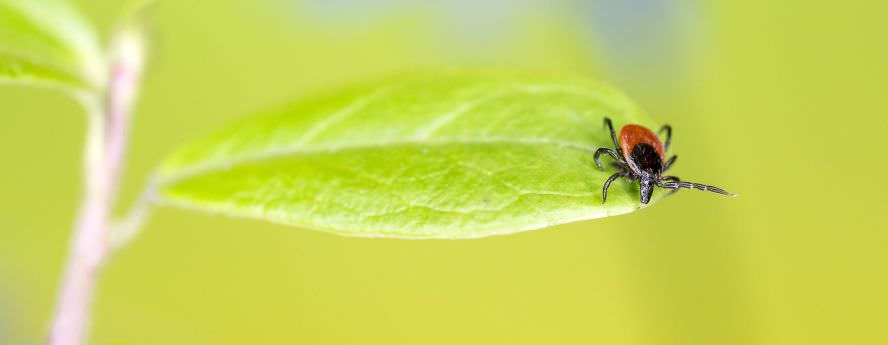
As we move deeper into the summer and the weather is warming up, many of us are planning holidays and days out. But as you might find yourself outdoors more often this season you will also be around more insects. This increases your risk of being bitten, so it is important to know what to do if you ever get a tick bite and how to prevent the Lyme disease that could be caused by them.
What is Lyme disease?
According to the NHS, Lyme disease is a bacterial infection caused by the bacterium Borrelia burgdorferi that is spread from infected ticks to humans.
Ticks are miniature spider-like creatures that feed on the blood of birds and mammals (including humans). They are found in heath and woodland areas, and the ticks that carry the bacteria that cause Lyme disease are found throughout the UK and in other parts of Europe and North America.
Ticks don’t fly, hop, run or move particularly quickly. They are usually found on vegetation and they latch to passers-by, humans or animals. There are three stages of development for a tick: larvae, nymphs and adults, each of a different size, with adults reaching the size of a pea when they are full of blood.
The NHS says that most tick bites are harmless as only a small number of ticks are infected with the bacteria that can cause Lyme disease. However, it is important to know the symptoms of this disease, particularly because many of them can resemble the symptoms of other conditions and, if left untreated, they could lead to serious health problems.
What are the symptoms of Lyme disease?
The NHS explains that many people with the early symptoms of Lyme disease develop a circular red skin rash around the tick bite, this rash can emerge up to 3 months after being bitten by a tick and can also last for many weeks.
However, approximately one in three people infected with Lyme disease won’t develop a rash, which is often the first stage of Lyme disease.
Some people will also experience flu-like symptoms in the first and second stages of the illness, such as:
- headache
- muscle pain
- stiff neck
- tender glands
- sensitivity to light, temperature and sound levels
What are the dangers of Lyme disease?
If Lyme disease is not treated in the early stages of rash or flu-like symptoms, Healthline says that a third stage can occur weeks, months or years later, with symptoms such as:
- arthritis of one or more large joints
- severe headaches
- disturbances in heart rhythm
- problems following conversations
- mental fogginess
- short-term memory loss
- brain disorders involving memory, mood and sleep
- numbness in arms, legs, hand or feet
The Guardian reports that Matt Dawson, a former England rugby captain, required multiple heart operations because of complications after being infected with Lyme disease.
How is Lyme disease treated?
According to the NHS, if your GP thinks you may have Lyme disease, you will be prescribed a course of antibiotics, and those with severe symptoms will be referred to a specialist. Most people recover from Lyme disease after antibiotics, although it can take months for some. Those with longer term symptoms of the disease, which last even after treatment, may be referred to a specialist hospital.
How do you prevent Lyme disease?
NHS Inform explains that there is no vaccine available for Lyme disease, the prime way to prevent the disease is to be aware of the risks when visiting outdoor areas where ticks are found and take sensible precautions.
They also say that you can reduce your risk of infection by:
- keeping to footpaths where possible and avoiding sitting directly on grass
- protecting your skin by covering up, tucking your trouser bottoms into socks and by using insect repellent on exposed skin
- wearing light-coloured clothing as this can help you to see the ticks against a light background
- inspecting your skin for ticks, especially at the end of the day
- making sure ticks are not carried home on clothing, pets or children
How do you remove a tick?
Lyme Disease Action says the best way to remove a tick is to use a proprietary tick removal tool and follow the instructions provided. However, if you do not have the tool, they recommend using pointed tweezers and grasping the tick as close to the skin as possible, without squeezing the tick’s body, and pulling it out without twisting.
It’s great to enjoy the outdoors in warm weather, but don’t forget to take care, protect yourself and others as well. Spread the awareness of Lyme disease and the possible dangers of ticks!
Disclaimer: The content of this website is provided for informational purposes only and does not substitute the medical advice from a healthcare professional.